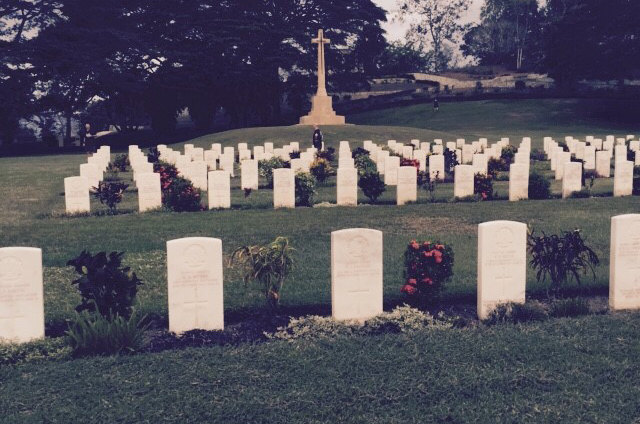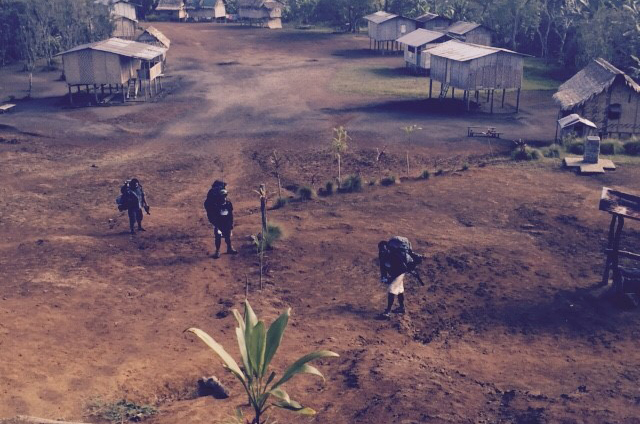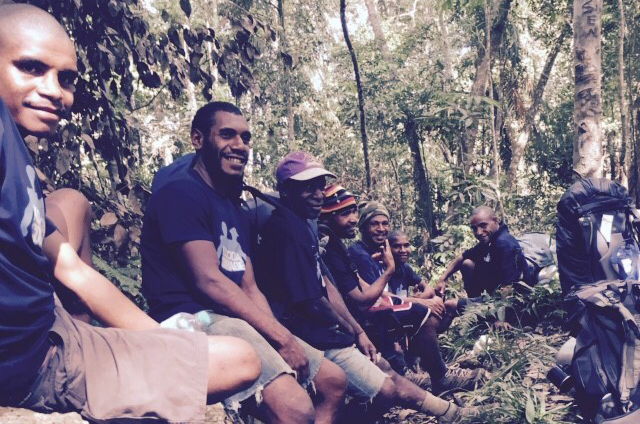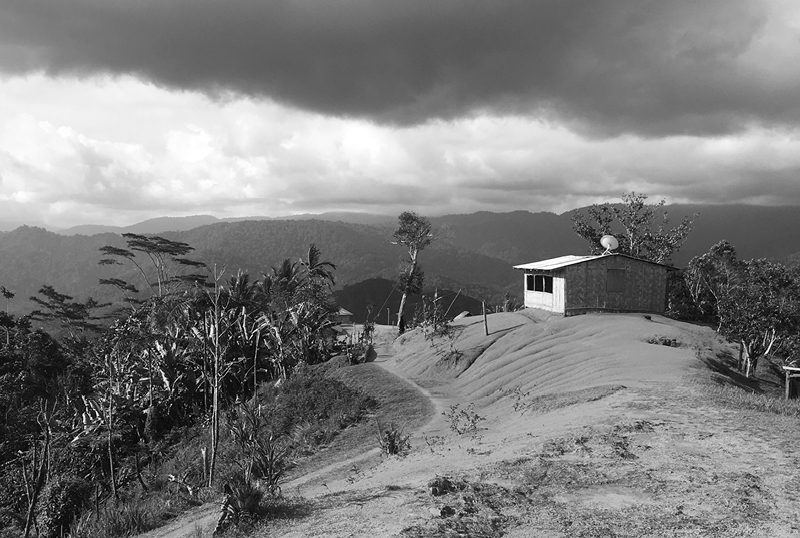Making the decision to walk the Kokoda Track is not for the faint of heart, but it provided me with more lessons than I initially thought – or signed up for.
For some people, their ‘bucket list’ involves a hot air balloon over Cappadocia, or a safari through the Serengeti. As a bright eyed and bushy tailed seventeen year old, studying Australian history in Year 12 sparked my interest in one day hiking the Kokoda Track.
The Kokoda Track or Trail is a single-file foot thoroughfare that runs 96 kilometres overland – or 60km in a straight line – through the Owen Stanley Range in Papua New Guinea. It’s place in Australian history is due to the track being the location of the 1942 World War II battle between the Japanese and Allied Forces, primarily Australians.
Needless to say that hot, humid days partnered with intensely cold nights, torrential rainfall and the risk of endemic tropical diseases such as malaria make it a challenging trek – if not one of the most challenging in the world. Despite these odds, the route takes between four and twelve days to conquer pending fitness levels, although locals have been known to tackle it in under three.
Although the logic behind the attraction varies, pilgrims have been hiking the Kokoda Trail for decades. For some, it’s the spectacular scenery while for others, it’s the physical challenge. For many, it’s the truest of insights as to what our ANZACs experienced, and has become an increasingly popular destination for veterans.
For me, the appeal lay in the physical challenge, and a desire to completely get away from the rat race. I was burnt out and hadn’t had a break from work in years, and so one Sunday afternoon over a few beers with friends – we made the commitment. Many of them were emergency service workers, and felt more or less the same as I did.

Preparing To Hike The Kokoda Track
I had the good fortune of already having one of the world’s best guides in my phone book. Peter Condon and I had already explored much of the United States together, and I knew that his latest project was running group treks through his business “Kokoda Courage”. As a current serving emergency services professional with over twenty six years of emergency management experience and with extensive treks around the world already under his belt, there’s nobody else I would have felt as comfortable with.

Although I already considered myself to be fairly fit, Peter had us all prepping months prior to the actual hike. Trekking through the hills of Papua New Guinea with a 20kg backpack on was a very different sort of “fit” when compared to going for a run on the weekend, so every week a few mates and I went on three to four hour walks with the packs to start getting “in the zone”.

Oddly enough, this prep work was one of my favourite parts of the whole process. I began to realise that the time spent with some of my closest friends – the walks, the banter, the counter lunches when we had done the work – was something that I’d previously taken for granted in my everyday life.
Once we were committed, I really started to dig deep into my research regarding the history of the Kokoda Track. The stories of the Australian troops that fought there is not something that many of us were taught, and in turn could appreciate. I also quickly learned just how remote the track actually is, and that most of the equipment that we were required to carry is mostly first aid and bedding – you actually take very few clothes or personal items.
What I Learned Hiking The Kokoda Track
I was initially surprised that half the fun seemed to be actually getting there. For our group, arriving at the base of the Kokoda Track involved a flight from Melbourne to Cairns, another to Port Moresby, followed by a bus ride to the compound.
We were warned not to leave the compound under any circumstances. Apart from street gangs, Papua New Guinea has a well earned reputation for being a dangerous place for foreigners. Although there have been rapid social, political and economic changes, it’s still very much a tribal society, with over 800 languages and dialects spoken. As a result, tribal wars remain rampant, but this is only going off the information I was given at the time.
Upon departure from Port Moresby, our group jumped on a chartered flight before one heck of a long drive to the start of the track, which is actually found in a village named Kokoda. We learned in the local war museum that in that campaign, it had strategic significance thanks to it being home to the only airfield along the Track.
At 96km long, the Kokoda Track doesn’t sound all that long, however it’s the terrain that has long been proven to be the breaker of men. Soldiers were challenged by steep, treacherous inclines, deep valleys, dense jungle, a debilitating climate and drenching rain that frequently turned the ground into quagmire – the Japanese even arrived with bicycles thinking that it could be ridden at a leisurely pace.

However, the Australian soldiers at times didn’t fare much better. Many people are unaware that they were all in fact rejected by the Australian Army to fight in Europe, as they were either too old, were straddled with less than desirable medical issues, or simply couldn’t pass the physical. At first, these ill-trained soldiers had earned the pejorative nick-name of “chocos” or “chocolate soldiers” – or those who would melt under the heat of battle. After their “baptism of fire” at Kokoda and Milne Bay, however, the ‘chocos’ proved that they could fight bravely and well.
Although significantly outmanned, the Australian soldiers held off the Japanese, and slowed their march to Australia. If injured, many Australian troops would simply crawl into the jungle to die. It took five men to carry one injured troop back and they didn’t want to be a burden or put their mates’ lives at risk, and to this day the Kokoda Track still has many of the trenches and live ammunition present, including grenades.
The Aussies weren’t alone though. “Fuzzy Wuzzy Angels” was the name given by Australian soldiers to Papua New Guinean war carriers who, during World War II, were recruited to bring supplies up to the front and carry injured Australian troops down the Kokoda trail during the Kokoda Campaign. The term “Fuzzy Wuzzy” was originally used by British soldiers in the 19th century as a name for Hadendoa warriors on the Red Sea coast of Sudan, and referred to their elaborate butter-matted hairstyles.
No known injured soldier that was still alive was ever abandoned by the Fuzzy Wuzzy Angels, even during heavy combat – and this figure included the Japanese. The porters on our trek were actually direct descendants of the “Fuzzy Wuzzy Angels” present during World War II, and although they were very shy and reserved, once they got familiar with us it didn’t take long for them to open up. I considered that in itself to be a great privilege.
Needless to say, the trek itself was both physically demanding, strenuous, and highly rewarding. This expedition is considered difficult as there are long walks over elevated terrain with ascents and descents along narrow jungle trails. Some days were long hauls of seven to ten hours through some of the most difficult terrain any of us had ever encountered, but it also provided the chance to truly get to know your fellow trekkers and forge lifelong bonds. The villages you visit and stay in at night are very remote, but the locals live a very simple but happy life. The meals at night were accompanied by games, laughter and stories that I’m sure I couldn’t have found anywhere else in the world.

It was during this trip that I also got to know both new and old friends who worked in the emergency services sector. Although I thought I had some idea of what working in the industry involved, I quickly discovered that members of this sector were usually time poor, exhausted from shift work and navigating high stress jobs – however, they also usually had families at home, and still had to buy and sell property just like everyone else. While I already had an extensive background in real estate, I realised that while there were many other advocates trading in Victoria, there were none dedicated solely to the emergency services industry.
Emergency Services Property Advisers was born on the back of my experiences on the Kokoda Track in 2016. ESPA now provides a completely free service to emergency services professionals looking to buy or sell property. Finally able to break free of the restrictions of sales, I am now able to better serve the community that I am most passionate about – the emergency services sector.


